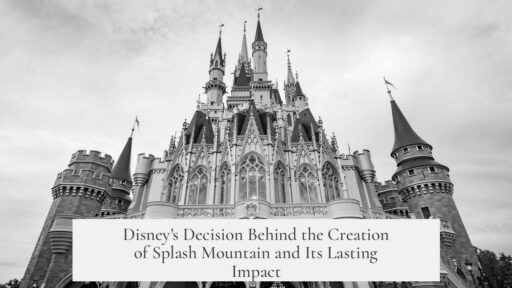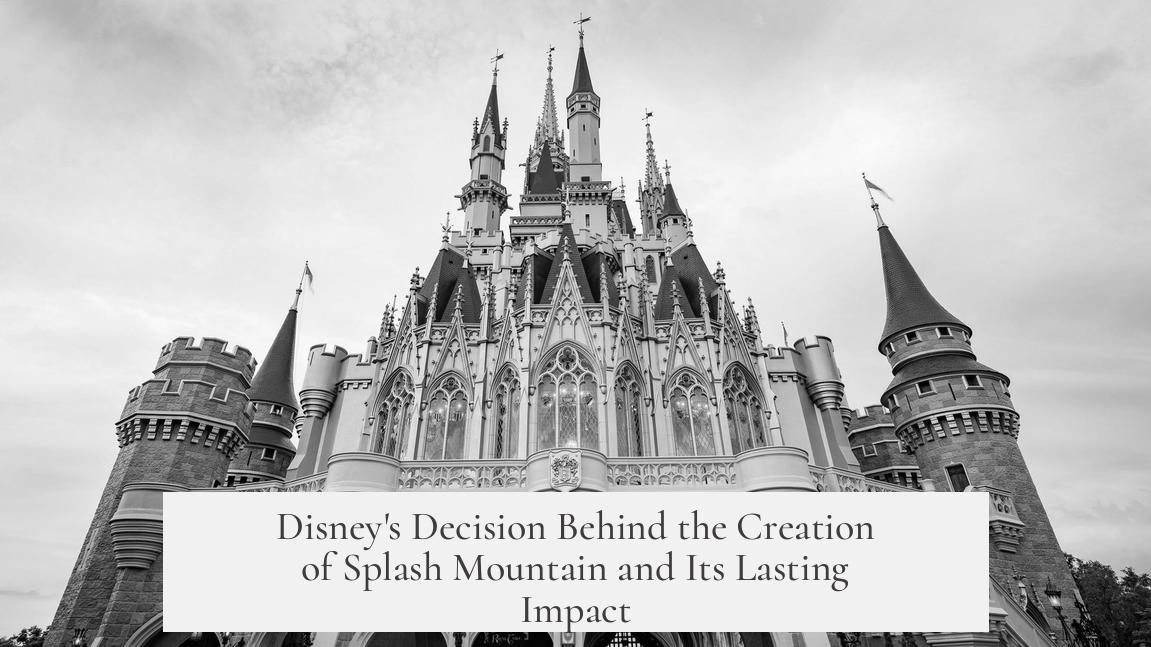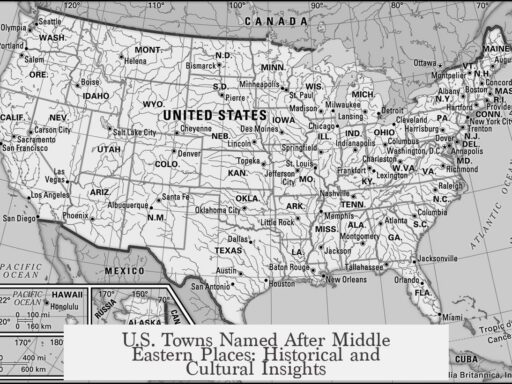Disney chose to create Splash Mountain primarily to revitalize a struggling section of Disneyland while making resourceful use of existing assets and maintaining a family-friendly, engaging experience.
In the early 1980s, Bear Country at Disneyland was failing to attract visitors. The area’s only ride, Country Bear Jamboree, was outdated and did not captivate families or children. Disneyland needed a fresh, exciting attraction to bring foot traffic back to this part of the park without incurring the expense and time required for building a brand-new ride from scratch.
At the same time, Disney was closing its America Sings attraction, a patriotic-themed animatronic revue that had run for seven years but suffered from poor attendance. The show’s closure posed a challenge: the park had dozens of expensive, detailed animatronic characters that could not simply be discarded without creative reuse.
Disney’s Imagineers viewed this challenge as an opportunity. They decided to develop a log flume ride—a water-based, family-friendly attraction that could provide thrilling fun for guests of all ages. This choice was practical; log flumes were popular and fit well into the park’s atmosphere, making them a logical addition to Bear Country.
For the ride’s theme, the Imagineers repurposed the America Sings animatronics into characters from the film Song of the South. This decision made sense as Marc Davis, a key Imagineer, had experience both animating for the original film and designing the animatronics for America Sings. This expertise allowed the team to transform existing figures seamlessly into a new storyline centered on these familiar animal characters.
Handling the controversy surrounding Song of the South was a significant consideration. The film’s portrayal of Uncle Remus and its romanticized depiction of the plantation era were highly contentious. Disney planned to remove Uncle Remus entirely from the attraction. This move was meant to distance the ride from the sensitive elements of the film. By focusing solely on the singing, friendly animals, Disney aimed to sidestep problematic themes while preserving the beloved characters.
Additionally, despite the movie’s obscurity, Disneyland had already introduced some Song of the South animal characters as walkaround figures, making them familiar to many guests. This familiarity helped ease guests into the ride’s concept and contributed to its initial acceptance.
The ultimate reason for creating Splash Mountain was practical and cost-effective. It allowed Disney to reuse valuable animatronics, fit the ride into an existing themed area, and attract visitors to an underperforming section of the park. At the same time, it mitigated cultural concerns by removing controversial elements while still telling a lighthearted story about animals in the bayou.
| Reason | Explanation |
|---|---|
| Revitalize Bear Country | Bear Country lacked exciting attractions; Splash Mountain aimed to increase foot traffic. |
| Reuse America Sings Animatronics | A void left by America’s Sings closure offered a chance to repurpose expensive characters. |
| Choose Family-Friendly Ride | A log flume provided a thrilling yet accessible experience for all ages. |
| Thematic Fit | Using Song of the South characters matched well with the animatronics and bayou setting. |
| Addressing Controversy | Removing Uncle Remus avoided the problematic elements tied to slavery and plantation nostalgia. |
| Cost-Effectiveness | Low development cost by reusing assets and adapting an existing theme. |
It is notable that it took more than 30 years for Disney to revisit the cultural challenges linked to this ride’s theme. As times changed, the park later took steps to address these concerns further.
For those interested, a gallery displaying the Marc Davis animatronics shows their transition from America Sings to Splash Mountain characters.
- Splash Mountain revitalized a lackluster park area.
- Reuse of America Sings animatronics reduced costs and saved resources.
- The ride’s family-friendly log flume format appealed broadly.
- Song of the South animal characters fit the theme and available assets.
- Removing Uncle Remus aimed to avoid controversy.
- Decades passed before cultural concerns were revisited seriously.
Why Did Disney Choose to Make Splash Mountain?
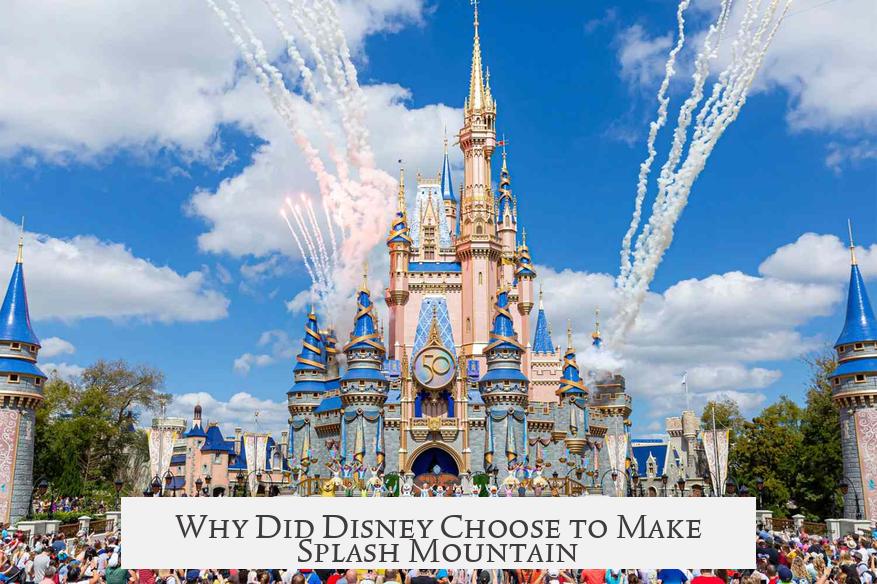
Simply put, Disney built Splash Mountain to refresh a struggling area in Disneyland cheaply by reusing animatronics and creating a fun, family-friendly log flume ride. Sounds straightforward, but there’s a fascinating story behind its splashy creation.
Back in the early 1980s, Disney’s Bear Country was more of a snooze zone than a crowd magnet. Its main offering was the Country Bear Jamboree, an old-school animatronic show featuring singing bears. Kids rarely lined up for it; instead, some guests treated it as a well-shaded nap stop. Not quite the kind of buzz Disneyland aims for.
Meanwhile, Disney was also dealing with the twilight of another attraction: America Sings. This animatronic revue, created as a bicentennial celebration, had been running for 7 years but lost its audience. Disney didn’t want to just shut it down and leave a vacant hall. After all, the attraction had dozens of expensive animatronic characters sitting idle inside—money best not wasted.
So what to do? The Imagineers had a brilliant moment of resourcefulness. Instead of designing an entirely new attraction from scratch, they decided to repurpose these animatronics into a fresh, thrilling ride. The answer materialized as a log flume ride, one that could encapsulate family fun with a splash of excitement for all ages.
But what about theme? The team landed on Song of the South characters, whose animal figures fit naturally with the existing Bear Country vibe. This connection was even smoother because Imagineer Marc Davis had a hand in both the original film’s animation and in designing the America Sings animatronics. The creative continuity gave the project an extra layer of authenticity and ease.
Now, let’s tackle a sticky part: the film Song of the South has been controversial for decades, mainly due to the portrayal of Uncle Remus—a former slave recounting plantation tales in a way many found problematic. Here’s the twist Disney used to skirt this: they dropped Uncle Remus from the ride entirely. The idea was that without him, the ride was just a cute, musical journey through the bayou starring cheerful animals. Controversy averted, or at least shelved.
Also, many Disneyland guests didn’t even know the full story of the film. Several characters from Song of the South appeared as walkaround figures in the park long before Splash Mountain opened. This familiarity helped guests embrace the ride without confusion or backlash.
At the end of the day, Splash Mountain was a masterstroke of low-cost innovation and smart resource use. It rejuvenated a forgotten part of the park by cleverly recycling expensive animatronics, creating a fresh family thrill ride that fit Bear Country’s theme. The cultural controversy? Disney’s workaround was to simply erase the problematic elements, though this approach would later face criticism itself.
Fascinatingly, it took over 30 years for Disney to seriously address the underlying issues with Splash Mountain’s theme, revealing how much times and sensitivities have evolved since the ride’s 1989 debut.
Lessons from Splash Mountain’s Creation
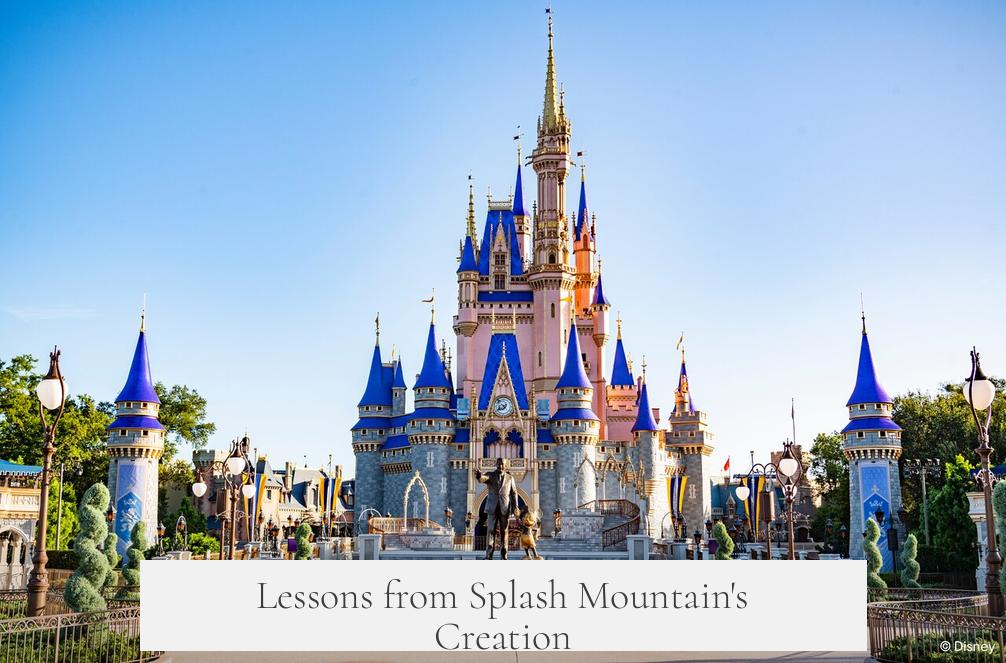
- Innovation through recycling: Disney turned near-obsolete assets into a blockbuster attraction.
- Creative leveraging of talent: Imagineer Marc Davis’s dual role connected old and new projects.
- Pragmatism over perfection: The ride was born from a practical need—to get visitors back to Bear Country—rather than just pure artistry.
- Managing controversy cautiously: Removing Uncle Remus was Disney’s quick fix to a thorny issue.
Curious to see the animatronics’ evolution? Check out this gallery displaying the Marc Davis characters side by side from America Sings to Splash Mountain.
Why Does Splash Mountain Still Matter?
Splash Mountain stands as a case study in smart theme park innovation. The ride wasn’t just a thrill; it was a practical solution to business and creative challenges. It reminds us that sometimes, the best ideas come from combining what you already have with fresh thinking.
So next time you queue up for a soggy log ride, remember: Splash Mountain is more than a splash. It’s history, creativity, controversy, and resourcefulness all rolled into one unforgettable plunge down the bayou.
